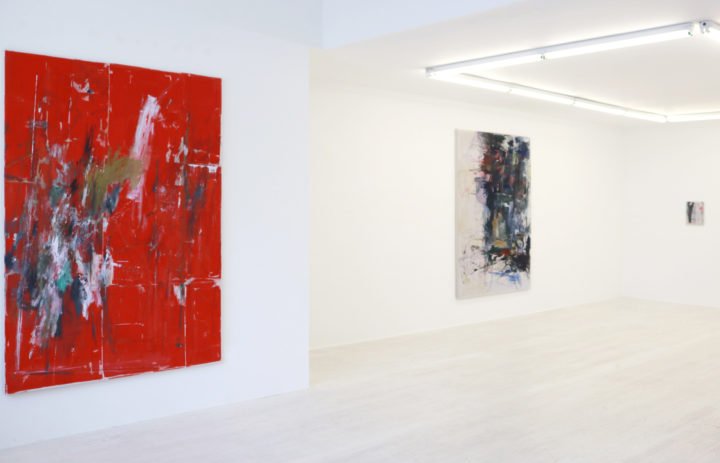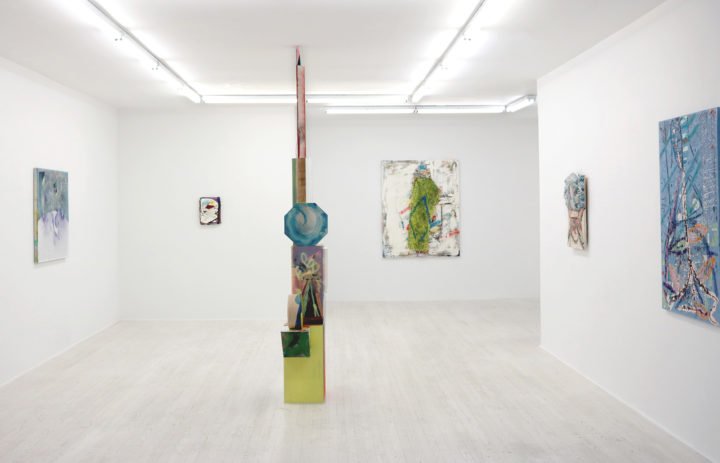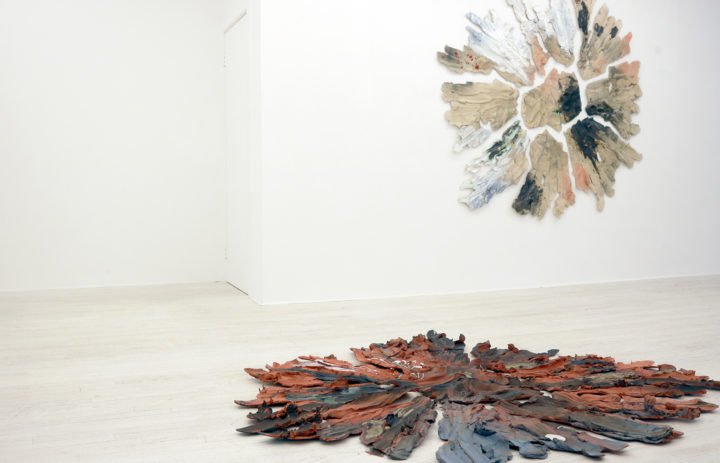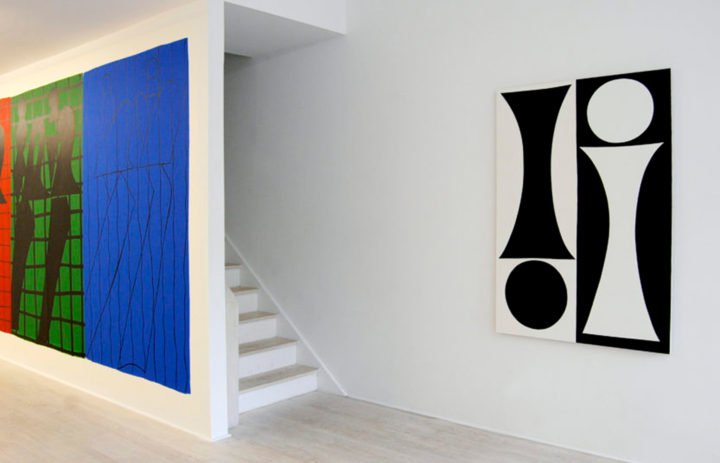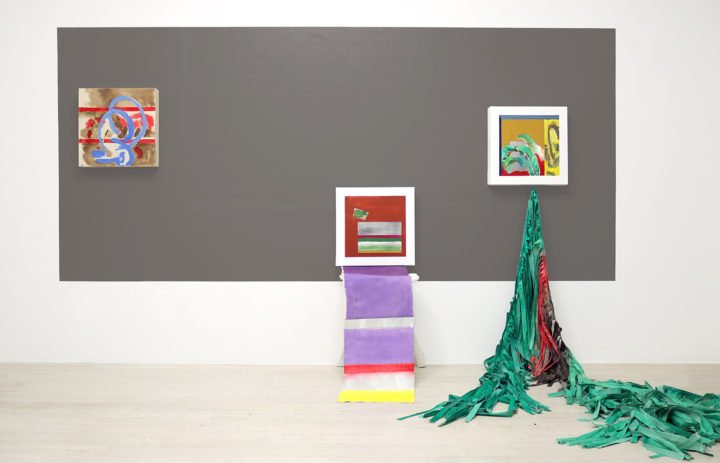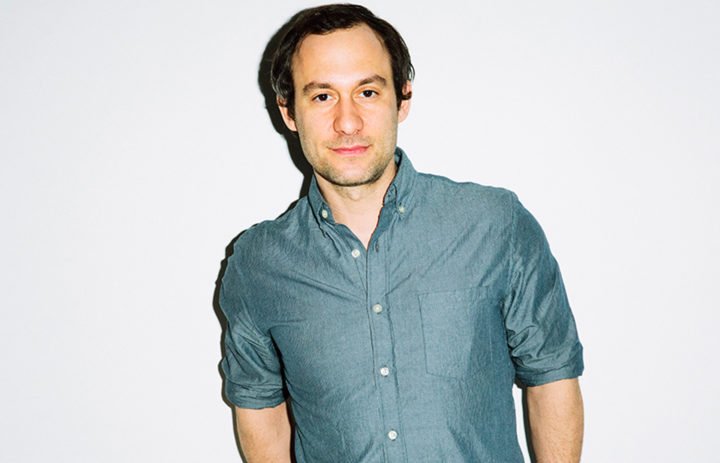- Address: 79 Newtown Lane East Hampton, NY 11937
- Founder/Director: Ryan Wallace
Ryan Wallace (R): We are next to a park, on the ground floor, with a large window at reception. The entrance has a vaulted ceiling that slants up to 22 feet, with two large walls on the left and right. The gallery extends back into an L shape with a white, pickled, wood floor and a grid of fluorescent lights above. There is a second, square-shaped, gallery upstairs with the same floor and lighting. We have some unique architectural details, such as a balcony window on the second floor that you can look down into the main space from, flat files built in to the reception table, and a wall-like banister that follows the stairs upwards. I feel like the space has personality but gets out of the way of the work.
It smells like fresh air.
R: I had always loved curating. First, as a way to return the favor to artists who had put me in shows, which led to continuously pairing works and artists that I saw as hypothetical exhibitions in my head. For years, viewing museums and galleries, this served as a mental exercise to find relationships between modes of working that aren’t superficially obvious. I mildly fantasized the idea of running a gallery to realize these shows but never took the thought seriously for practical reasons. The gallery started as a casual conversation to do a pop-up of Joseph Hart’s work in East Hampton. Finding temporary space proved more difficult than getting a seasonal lease in a basically turn-key spot. From there, it grew in a series of organic spurts. When we lost that first lease, it forced us to look for a space quickly, and that landed us where we are now. I continue to enjoy helping to facilitate shows for artists that I love and respect.
R: Halsey and McKay are the maiden names of my, and my original partner’s, grandmothers. McKay is also my middle name.
R: Continuing to be a practicing artist lends an acute understanding to the artist’s needs and expectations. I can help to navigate all of the joys, stresses, successes, traumas and expectations from the place of a fellow artist, first. The gallery is a tight group of people. The circle has expanded over the years, but it was founded as a core group of artists who really believe in one another’s and other’s work, commitment, and had watched each other’s development over years. This support system is reinforced in both directions. The artists care about the long-term success of the gallery as much as I do about the success of their careers. Programming decisions made from this space are motivated by artistic rigor rather than fashion or trend- based choices. I won’t make decisions for the gallery that could reflect poorly on me as an artist, and vice versa. Since I am actively working as an artist, it lends credibility and experience to any guidance that I am asked for by the artists and from our collectors. Collectors can confidently acquire work here from someone actively involved in the market on multiple fronts, and as a peer, has direct insight to the level of commitment that the artists have to their practices. Often, I think that the artist/collector/dealer dynamic is erroneously positioned as one of opposition – that each wants something from the other on different terms. I think we have a nice dialogue where the parties are equally informed. I’m probably too open really for some but I like sharing this first-hand information that each part of the trifecta isn’t usually privy to.
R: Consistent, Earnest, Ethical.
R: I would like to have more staff.
R: Consistently bringing exciting shows of new work to the area has always been the goal of the gallery. I really hope that any time someone walks through the door that they are inspired and surprised.
R: Things are a bit more relaxed, but it operates as a satellite to the New York art world. Considering how small of a community it is, there is a substantial amount of activity. On our street alone there are 5 relevant contemporary art galleries, and there are several others throughout the neighboring community. You can find post-war abstraction, turn- of- the- century realism, secondary market mainstays and living artists spanning regional and international stages. There are historically relevant sites, museums and residencies all around. It is the most culturally rich beach and farm town that I have been to. I don’t think that we could exist in any other similar landscape.
R: That you can’t do both well.
R: The paleolithic cave painters. Their marks prove that making art is a natural human impulse.
R: Colby Bird’s first show with the gallery was probably the most physically challenging.
R: To continue the gallery after my co-founder decided to take a less active role.
R: Our next show is a two-person exhibition with Chris Duncan and Ernesto Burgos. Chris is one of the first artists who we worked with, and he introduced me to Ernesto’s work years ago. We did a show with Ernesto in 2013. It feels especially appropriate that they are showing together, in our space. They are very different artists, so I am looking forward to how the works play together. I think that there are going to be some very strange and surprising visual relationships.
R: I look for artists that are sui generis in spirit, thinking, and in their approaches to making art, have a firm grasp on history, and are thoroughly committed. I don’t favor one mode of art making over any other, but I understand things best in material terms, and that seems evident in the programming. There are a lot of artists who are either virtuosic in their handling of traditional materials like oil paint, or who are wildly inventive with combinations of unlikely materials.
R: Make work that is your own and commerce will intersect on its own agenda. Have stamina and patience. Don’t compare yourself to other artists. Don’t assess your success through the lens of Instagram.
R: Each artist’s path is unique. Know your art history.
R: I recently watched “The Defiant Ones,” which is a story about the death of the music industry as it understood itself in the pre-internet years, as much as it is about Dr. Dre and Jimmy Iovine. They team up to make a headphones company which in turn subsidizes music-making.
There is a lot of speculation about the death of this and that in the art world and a lot of speculation about what the future can and cannot support. I’m open to any and all avenues that support actualizing physical exhibitions in brick- and- mortar spaces. So I guess my short answer is: Headphones.
- Featured image on the top: Art by Elise Ferguson
- Photos courtesy of Halsey McKay Gallery



